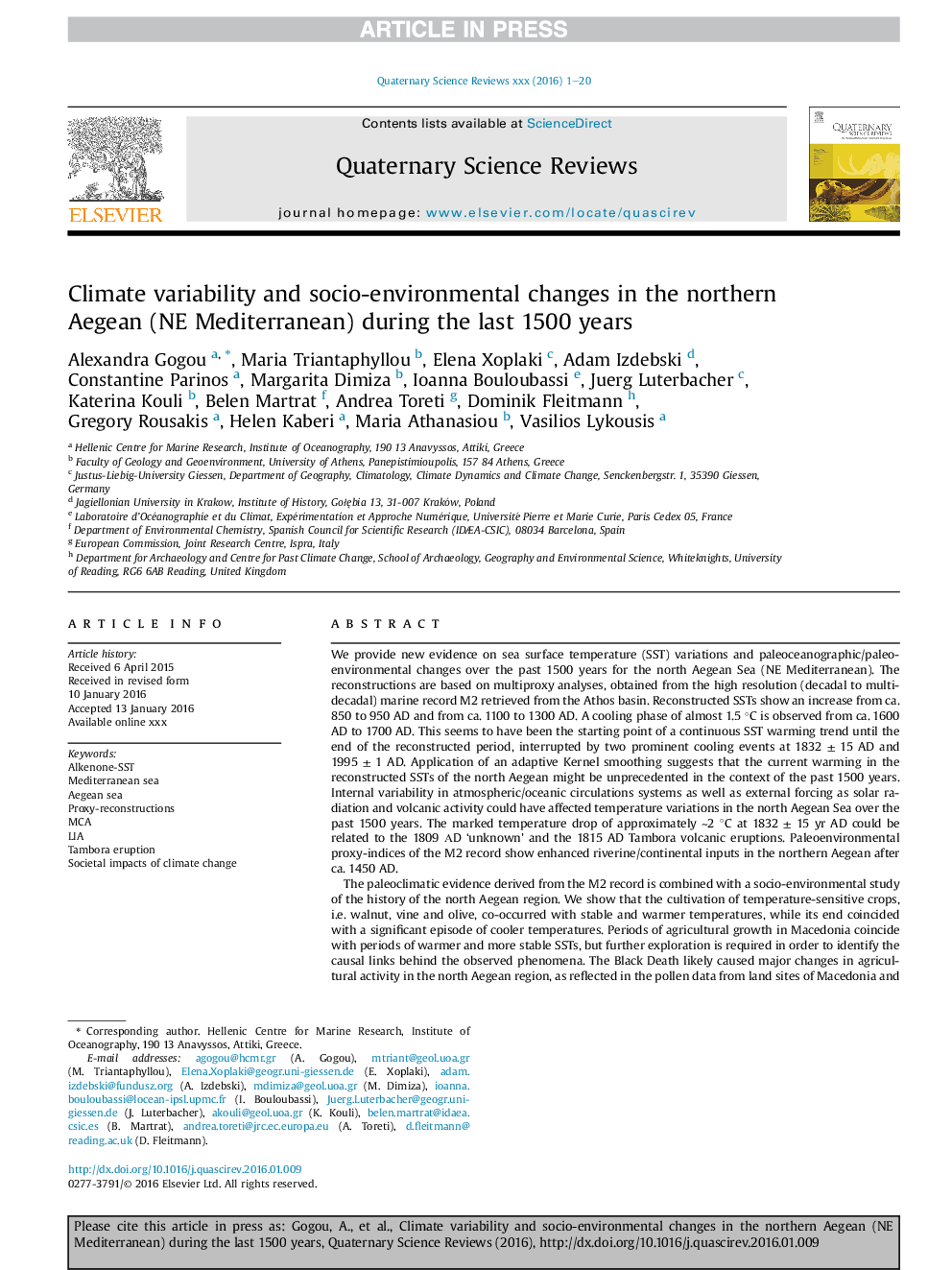| Article ID | Journal | Published Year | Pages | File Type |
|---|---|---|---|---|
| 6446595 | Quaternary Science Reviews | 2016 | 20 Pages |
Abstract
The paleoclimatic evidence derived from the M2 record is combined with a socio-environmental study of the history of the north Aegean region. We show that the cultivation of temperature-sensitive crops, i.e. walnut, vine and olive, co-occurred with stable and warmer temperatures, while its end coincided with a significant episode of cooler temperatures. Periods of agricultural growth in Macedonia coincide with periods of warmer and more stable SSTs, but further exploration is required in order to identify the causal links behind the observed phenomena. The Black Death likely caused major changes in agricultural activity in the north Aegean region, as reflected in the pollen data from land sites of Macedonia and the M2 proxy-reconstructions. Finally, we conclude that the early modern peaks in mountain vegetation in the Rhodope and Macedonia highlands, visible also in the M2 record, were very likely climate-driven.
Keywords
Related Topics
Physical Sciences and Engineering
Earth and Planetary Sciences
Geology
Authors
Alexandra Gogou, Maria Triantaphyllou, Elena Xoplaki, Adam Izdebski, Constantine Parinos, Margarita Dimiza, Ioanna Bouloubassi, Juerg Luterbacher, Katerina Kouli, Belen Martrat, Andrea Toreti, Dominik Fleitmann, Gregory Rousakis, Helen Kaberi,
